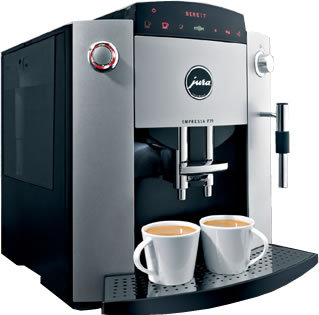As a barista, you must know the development history of coffee machine.

Gestation period: the "perfect steam theory" of coffee extraction before 1900
In 1800, Archbishop D'Bello of Paris invented the waterdrop coffee maker.
In 1818, Dr. Romershausen obtained a patent for "extractor" in Prussia.
In 1822, the Frenchman Louis Bernard Rabout obtained a patent to obtain a cleaner extract based on the characteristics of oil-absorbing ink paper combined with the design of Dr. Romershausen.
In 1824, Caseneuve, a Parisian craftsman, designed a coffee utensil that was too complex to make, hoping to avoid the loss of aroma.
In 1827, Laurens's patent in France emphasized the need to wet coffee powder with steam before coffee extraction.
In 1833, Samuel Parker, an Englishman, invented using a pump to pump water up through coffee instead of letting it flow down. (he paid special attention to the fact that the good taste of coffee first appeared bitter and was extracted in the later stage.)
In 1838, Leburn, an optician in Paris, designed a number of small table coffee makers, which were very popular in southern Europe.
In 1840, Tiesset designed a vacuum pump to pull hot water down with extra force through coffee powder.
In 1844, Frenchman Cordier painted a number of coffee extractors in his patent, one of which was very similar to Eicke's German machine 30 years later.
In 1847, Romershausen made a steam pressure coffee pot.
In 1855, the Frenchman Loysel introduced a large-capacity bar coffee machine (about 4.5m high), which claims to make 10000 cups of coffee a day.
In 1868, the Viennese Reiss developed a new type of "Viennese pot".
In 1885, the Italian Angelo Moriondo signed a patent for coffee that could make 50 cups at a time.
Childhood: exclusive privilege of one cup of coffee at a time, 1901-1947
The coffee machine designed by Luigu Bezzera in 1901 was successfully patented.
In 1902, his friend Desiderio Pavoni added a pressure relief piston device to the machine and commercialized the machine for production and sale.
In 1903, Bezzern sold the patent to Pavoni at a cost of 10, 000 lire due to financial difficulties.
In 1905, La Pavoni Company was announced.
Important Notice :
前街咖啡 FrontStreet Coffee has moved to new addredd:
FrontStreet Coffee Address: 315,Donghua East Road,GuangZhou
Tel:020 38364473
- Prev

The coffee culture on the tip of the tongue has no taboos in American style.
Coffee is no longer a new word. Coffee tastes different in different countries and places, but how much more do you know about coffee culture in different regions? When we travel, if you can know in advance about the local coffee culture, then it must be just a break during the trip, and you can really taste the local culture and customs.
- Next

Coffee Culture about American Coffee
Some friends have questions about the practice of American coffee. Dilute a cup of Espresso with water. Is it American coffee? Uncle Dou's answer: it is indeed so. Let's first take a look at how American coffee appears and is named. American coffee was born after World War II, when the Americans ended the war in Europe, many troops came to southern Europe, they could not drink Espresso, so
Related
- How did the Salvadoran coffee industry develop in Central America?
- What exactly does the golden cup extraction of coffee mean?
- The Origin of Coffee flower
- [2023 Starbucks World Earth Day] there are more meaningful things besides free Starbucks coffee!
- What kind of coffee is there in Spain? 9 Flavors of Spanish Coffee
- Aromatic African coffee| Kenya's coffee culture and historical production area
- Liberica Coffee Bean knowledge: the characteristics of Liberian Coffee beans of the three original species of Coffee beans
- The origin and formula of Spanish latte introduces the taste characteristics of Bombon coffee in Valencia, Spain.
- How to adjust the solution of over-extracted coffee
- What is the tasting period of coffee beans? What is the period of coffee and beans? How should coffee wake up and raise beans?

